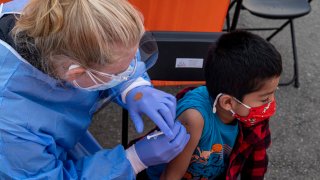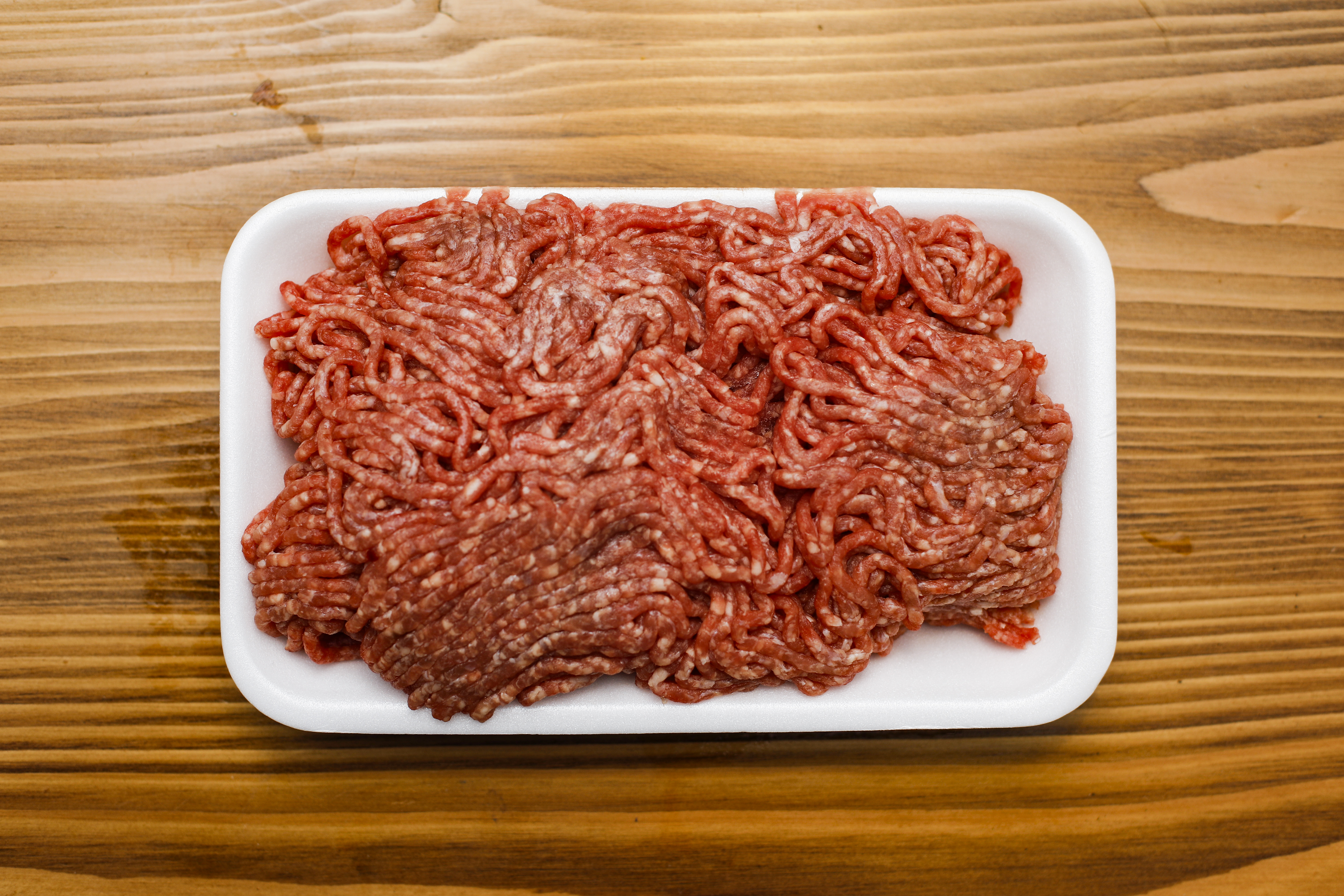
U.S. regulators on Wednesday authorized new bivalent COVID booster shots for children as young as 5, expanding eligibility for the omicron-specific vaccines from the previous minimum of 12 years old.
The new booster doses, which were tweaked to specifically target the omicron COVID variant and now-dominant highly contagious subvariants, originally rolled out for those 12 and older in September. Officials hope that expanding eligibility will provide extra protection heading into the winter season and upcoming holidays.
Here's what to know about the new shots available for children:
Which Shots Can Children Receive and Who is Eligible?
The Food and Drug Administration authorized Pfizer's bivalent shots Wednesday for elementary school-age kids, or those between the ages of 5 and 11 years old, and a version from rival Moderna for those as young as 6.
The Centers for Disease Control and Prevention, which recommends how vaccines are used, also signed off hours later.
Only people who’ve gotten their initial vaccinations -- with any of the original-formula versions -- qualify for an updated booster. The booster can only be administered at least two months following completion of primary or booster vaccination in children, the FDA stated.
Local
Less than a third of 5- to 11-year-olds have had their two primary doses and thus would qualify for the new booster.
When Could Shots Begin?
Feeling out of the loop? We'll catch you up on the Chicago news you need to know. Sign up for the weekly Chicago Catch-Up newsletter.
Pfizer said it could ship up to 6 million kid-sized doses within a week of authorization, in addition to ongoing shipments of adult-sized doses.
"My guess is that the earliest would be potentially next week or maybe the week after that we will have bivalent vaccines available for 5- to-11-year-olds," Chicago Department of Public Health Commissioner Dr. Allison Arwady said Tuesday, prior to authorization.
Is the Dosage Different for Children?
This age group will get kid-size doses of the new omicron-targeting booster — and they can receive it at least two months after their last dose, whether that was their primary vaccination series or an earlier booster, the FDA said.
For the updated booster made by Pfizer and its partner BioNTech, 5- to 11-year-olds would get a third of the dose that anyone 12 and older already receives.
Until now, Moderna’s updated booster was cleared only for adults. FDA just expanded that adult bivalent dosage to 12- to 17-year-olds, and authorized half the dose for kids ages 6 to 11.
Are There Any Safety Concerns?
The updated boosters are “extremely important” for keeping kids healthy and in school, said Dr. Jason Newland, a pediatric infectious disease specialist at Washington University in St. Louis.
Parents should know “there is no concern from the safety perspective with the bivalent vaccines, whether Moderna or Pfizer,” Newland added.
How Are the Bivalent Shots Different?
Experts say the updated shots have an advantage: They contain half the recipe that targeted the original coronavirus strain and half protection against the dominant BA.4 and BA.5 omicron versions.
These combination or “bivalent” boosters are designed to broaden immune defenses so that people are better protected against serious illness whether they encounter an omicron relative in the coming months -- or a different mutant that’s more like the original virus.
“We want to have the best of both worlds,” Pfizer’s Dr. Bill Gruber, a pediatrician, told The Associated Press. He hopes the updated shots will “re-energize interest in protecting children for the winter.”
Why Should Kids Get It?
"Since children have gone back to school in person and people are resuming pre-pandemic behaviors and activities, there is the potential for increased risk of exposure to the virus that causes COVID-19. Vaccination remains the most effective measure to prevent the severe consequences of COVID-19, including hospitalization and death,” Dr. Peter Marks, FDA’s vaccine chief, said in a statement. “While it has largely been the case that COVID-19 tends to be less severe in children than adults, as the various waves of COVID-19 have occurred, more children have gotten sick with the disease and have been hospitalized. Children may also experience long-term effects, even following initially mild disease. We encourage parents to consider primary vaccination for children and follow-up with an updated booster dose when eligible.”
How Much Protection Do the Shots Give?
Exactly how much protection does an updated COVID-19 booster shot offer? That’s hard to know. Pfizer and Moderna are starting studies in young children.
But the FDA cleared the COVID-19 booster tweaks without requiring human test results -- just like it approves yearly changes to flu vaccines. That’s partly because both companies already had studied experimental shots tweaked to target prior COVID-19 variants, including an earlier omicron version, and found they safely revved up virus-fighting antibodies.
“It's clearly a better vaccine, an important upgrade from what we had before,” Jha said earlier this week.
Jha urged adults to get their updated shot in October — like they get flu vaccinations — or at least well before holiday gatherings with high-risk family and friends. People who've recently had COVID-19 still need the booster but can wait about three months, he added.
What About Children Under 5?
As for even younger tots, first vaccinations didn’t open for the under-5 age group until mid-June -- and it will be several more months before regulators decide if they’ll also need a booster using the updated recipe.



